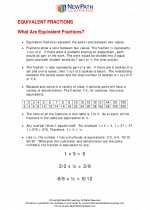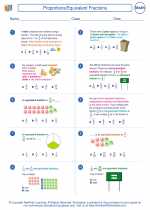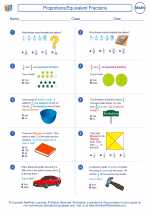Proportion
In mathematics, a proportion is an equation that states that two ratios are equal. It can be written in the form a/b = c/d, where a, b, c, and d are numbers and b and d are not zero. Proportions are used to compare the relative sizes of different quantities. When two ratios are equal, they form a proportion.
Study Guide
Example 1:
Find the missing number in the proportion: 3/5 = x/15
Solution:
Using the property of proportions, we can cross multiply to solve for the missing number. This means we multiply the extremes (3 * 15) and the means (5 * x), and then set the two products equal to each other:
3 * 15 = 5 * x 45 = 5x x = 9So, the missing number in the proportion is 9.Example 2:
If 4/7 = 12/y, find the value of y.
Solution:
Again, we can use the property of proportions to solve for the missing number. We cross multiply the extremes (4 * y) and the means (7 * 12), and then set the two products equal to each other:
4y = 7 * 12 4y = 84 y = 21So, the value of y is 21.Practice Problems:
- If 2/3 = x/9, find the value of x.
- If 5/8 = 25/y, find the value of y.
- If 9/12 = 15/x, find the value of x.
Once you've completed the practice problems, you can check your answers below:
Answers:
- x = 6
- y = 40
- x = 20
◂Math Worksheets and Study Guides Sixth Grade. Proportions/Equivalent Fractions

 Worksheet/Answer key
Worksheet/Answer key
 Worksheet/Answer key
Worksheet/Answer key
 Worksheet/Answer key
Worksheet/Answer key
